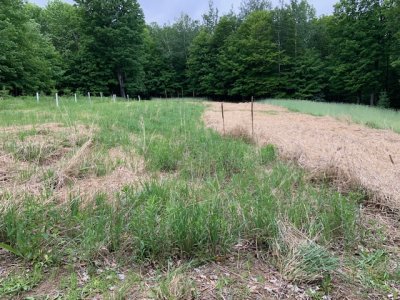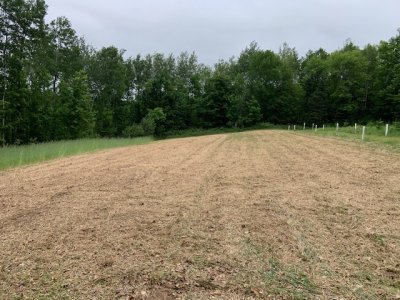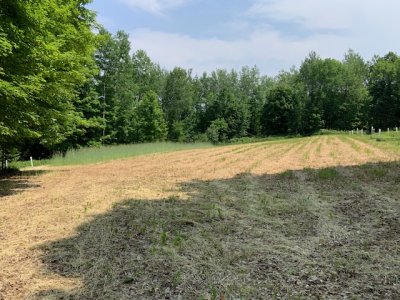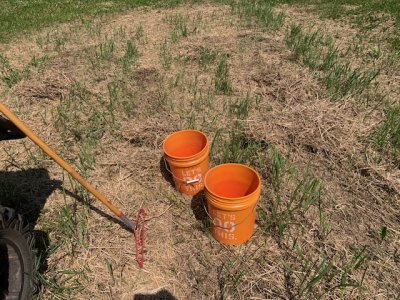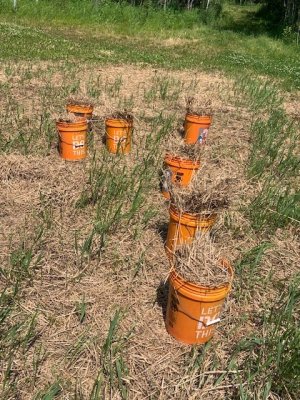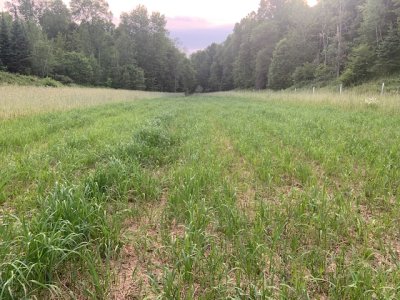SD51555
5 year old buck +
The big dig is just a couple weeks away. I've been planning and prepping for the whole deal for a while. One idea that came to me recently was importing thatch.
I'm not talking anything revolutionary here. I'm gonna be digging a pond and spreading heavy clay spoils. They have historically taken me at least two growing seasons to get any sort of ground cover and decent amount of food out of them. Eventually they do take, but I'm trying to cut down the time it takes to do it. I've got a couple round bales at my place I've been using for projects and gardens. I'm planning to haul the remainder of those two bales back to the new clay layer and putting that down and spreading it out after I'm done seeding. I'm hoping that'll help get my stuff germinated, keep the soil moist, and prevent crusting.
When I get to the bottom of the hole, I want to try to remember to pull a soil sample. I'm curious what's going on that far down. I did one a few years ago from like 30-36" below the surface. It was very different from my topsoil samples.
I'm not talking anything revolutionary here. I'm gonna be digging a pond and spreading heavy clay spoils. They have historically taken me at least two growing seasons to get any sort of ground cover and decent amount of food out of them. Eventually they do take, but I'm trying to cut down the time it takes to do it. I've got a couple round bales at my place I've been using for projects and gardens. I'm planning to haul the remainder of those two bales back to the new clay layer and putting that down and spreading it out after I'm done seeding. I'm hoping that'll help get my stuff germinated, keep the soil moist, and prevent crusting.
When I get to the bottom of the hole, I want to try to remember to pull a soil sample. I'm curious what's going on that far down. I did one a few years ago from like 30-36" below the surface. It was very different from my topsoil samples.

